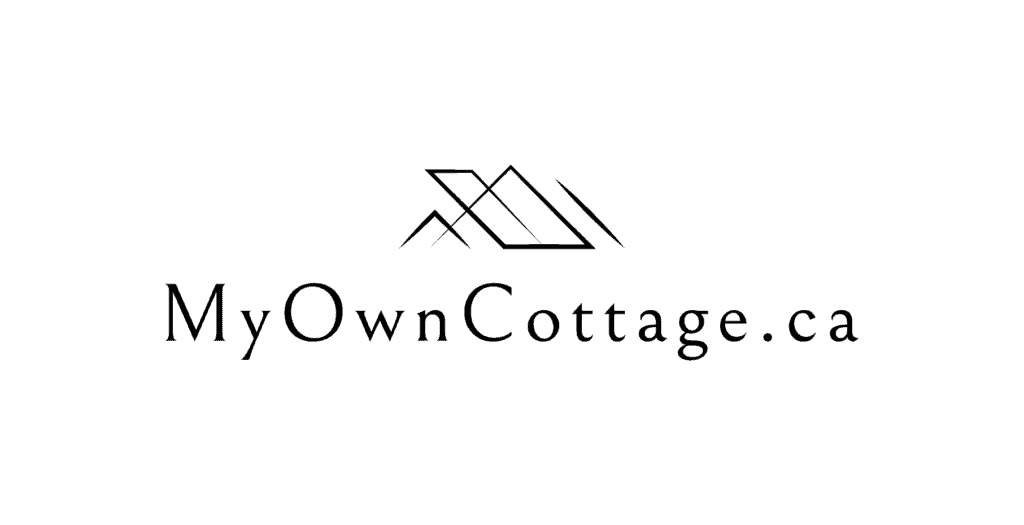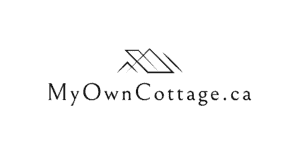Can You Live Off-Grid in a Prefab Cottage in Ontario?
Can you live off-grid in a prefab cottage in Ontario?
Explore if off-grid living in a prefab cottage in Ontario is legal, possible, and practical.
Plus get key tips, costs, and pros and cons.
Can You Live Off-Grid in a Prefab Cottage in Ontario?
Yes, you can live off-grid in a prefabricated cottage in Ontario, provided the dwelling meets the Ontario Building Code (OBC) and complies with local zoning bylaws regarding water access, energy systems, and waste management.
Homes built in a controlled environment and certified under CSA A277 standards can legally qualify as primary residences.
Modern prefab cottages in Ontario offer an ideal blend of energy efficiency, high-quality construction, and modular design.
Naturally, this is making them an increasingly popular option for those seeking a dream home that’s both sustainable and customized.
🛠️ Expert Reviewed | Last updated: July 2025
Verified by our prefab design team for zoning accuracy and energy efficiency standards
Living Off-Grid in a Modern Prefab Cottage in Ontario
Living in a modern prefab cottage in Ontario is no longer a fringe concept—it’s a legitimate and high-quality housing solution supported by advancements in building techniques, material sourcing, and provincial regulations.
Whether you’re planning a lakeside escape on Lake Muskoka, a tiny house nestled in a forest, or a full-time residence with a Muskoka Room.
Prefab living offers peace of mind, design flexibility, and the ability to build in areas otherwise prone to construction delays.
What Does Off-Grid Living Mean in Ontario?
Going off-grid means your new home is fully self-sufficient: no reliance on municipal electricity, water, or sewer systems.
Today’s modular homes come equipped with:
Energy Systems: Solar panels, battery banks, or micro turbines
Water Access: Rainwater harvesting, filtration systems
Waste Management: Composting or low-impact septic systems
Interior Finish: Open-concept living room, dining room, and full bathroom setups
Modern off-grid cottages combine contemporary design with function—offering the comforts of modern living without sacrificing independence.
Key Features of Off-Grid Living
Energy independence: Off-grid homes use solar panels, battery banks, or micro wind turbines to power everything from lights to HVAC systems.
Water and waste autonomy: Systems include rainwater harvesting, greywater recycling, compost toilets, or approved septic setups.
Living space: Off-grid prefab cottages can range from small sleeping cabins under 500 sq ft to spacious custom home layouts of 1,200+ sq ft.
Legal and Structural Requirements
To legally build and live off-grid, ensure your prefab structure meets:
CSA A277 Certification for factory-built homes
Ontario Building Code regulations for structure, HVAC systems, and safety
Zoning bylaws for accessory structures and land use
Permits for occupancy, energy systems, and septic
Common township requirements include:
Approved building plans
Proof of road and emergency service access
Water source documentation
🔗 Learn more about modern prefab cottages in Ontario.
📘 Regulatory References
Ontario Building Code (OBC): Governs safety, plumbing, structure, and electrical standards in residential buildings.
CSA A277 Certification: Verifies that prefab homes built in a controlled environment meet national building codes.
Municipal Zoning Bylaws in Ontario: Each township has its own rules—be sure to consult local planning offices.
Are Prefab Cottages Suitable for Off-Grid Living?
Absolutely.
Prefab cottages are engineered for energy efficiency, sustainability, and remote site adaptability. Top models include:
Modular platform homes: Built off-site in a controlled environment, then delivered
Tiny homes: Compact, mobile units with small footprints and low energy consumption
Container-based cottages: Reinforced structures ideal for rugged climates
Key Design Features:
Passive solar orientation
Energy-efficient windows and entry doors
Use of sustainable materials like FSC-certified wood
High insulation values for winter comfort
Types of Prefab Homes Designed for Off-Grid Living
Modular platform: Fully engineered homes constructed in a controlled environment.
Tiny homes: Compact, mobile, and optimized for low energy consumption.
Container-style cottages: Durable and compact, ideal for rural or remote lots.
Key Structural & Design Considerations
High-quality insulation for year-round comfort
Passive solar orientation to maximize natural light and heating
Energy-efficient windows and doors to minimize heat loss
Sustainable materials like FSC-certified wood or recycled steel
💬 Are prefab cottages energy-efficient enough to go off-grid?
Absolutely—most high quality products now come with energy efficiency ratings suitable for northern climates.
Zoning and Bylaw Challenges
Common issues include:
Composting toilet restrictions
Limits on accessory structures
Fire access road requirements
🔗 Learn about Ontario Prefab Cottage Zoning Laws.
Cost of Living Off-Grid in a Prefab Cottage
Off-grid living in Ontario can offer long-term savings—but it’s not without upfront costs.
Startup Costs
| Item | Approximate Cost |
|---|---|
| Solar power system | $15,000–$30,000 |
| Septic or compost system | $6,000–$15,000 |
| Rainwater harvesting system | $3,000–$7,000 |
| Insulated prefab shell | $150–$300/sq ft |
Ongoing Monthly Expenses
Backup fuel (propane or diesel): $100–$300
Maintenance (solar, HVAC): $50–$100
Internet via Starlink or LTE: $100–$130
How It Compares to Grid-Tied Cottage Living
Over a 10-year span, off-grid homeowners often save $25,000–$50,000 in utility bills—plus, you’re insulated from construction delays, rain delays, and rising hydro rates.
Real-Life Examples of Off-Grid Prefab Living in Ontario
Nadine and Eric’s Cottage near Algonquin Park Former condo-dwellers in Ottawa, they transitioned to a custom home with a cathedral ceiling, solar panels, and woodstove heating in their Muskoka Room.
“The silence is the luxury. Our prefab gave us a real home design tailored to our lifestyle,” says Eric.
A Lake Temagami Tiny House
At under 600 sq ft, this tiny house leverages smart interior design with floor-to-ceiling windows, rainwater filtration, and a dual-zone HVAC system—all within a high quality product.
Community Insights
Online groups like Off-Grid Ontario Living and Tiny Homes Canada offer design ideas, support, and customer service tips for new home buyers.
Step-by-Step Guide to Going Off-Grid in Ontario
Choose a Certified Builder
Select firms like My Own Cottage with OBC-compliant models and strong customer service.
Plan Infrastructure
Align solar and water systems with your floor plans and square feet needs
Install & Inspect
Use licensed construction personnel, ensure quality control, and schedule municipal inspections
Design Ideas and Innovations
Natural Light: Floor-to-ceiling windows
Open-Concept Layouts: Seamless living space with integrated home office
Green Building: Energy Star appliances and sustainable materials
Guest House Options: Detached accessory structures for visitors
Installation and Inspection Tips
Ensure proper siting with sun access
Schedule inspections post-installation
Retain warranties and quality control documentation
🔗 Read our “Best Prefab Cottages and Companies in Ontario” resource.
✅ Off-Grid Prefab Cottage in Ontario: Compliance & Planning Checklist
🛠️ 1. Regulatory & Legal Compliance
Home design meets Ontario Building Code (OBC) standards
Prefab model is CSA A277-certified
Municipal zoning bylaws permit year-round off-grid living
Building permits obtained from local township
Site access meets fire/emergency service requirements
🔋 2. Energy & Utility Systems
Solar panel + battery bank sized for total energy load (HVAC, lighting, appliances)
Backup energy source planned (propane, diesel, woodstove)
Greywater and/or rainwater system with filtration installed
Approved composting or septic system on file
🧱 3. Structure & Design Considerations
High insulation values for winter comfort (R-value meets or exceeds local standards)
Passive solar orientation integrated into site plan
Energy-efficient windows and entry door selections made
Interior includes open-concept layout, natural light optimization, and adequate sq ft for intended use
Optional: Muskoka Room, guest house, or accessory structure included in building plans
👷 4. Builder & Construction Readiness
Builder is OBC-compliant and experienced with controlled environment construction
Final floor plans approved and submitted
Construction personnel licensed and insured
Quality control documentation retained
Final inspection(s) scheduled post-install
💰 5. Budget & Timeline Planning
Solar + battery system: budgeted at $15,000–$30,000
Septic/compost system: $6,000–$15,000
Rainwater harvesting: $3,000–$7,000
Prefab build: $150–$300/sq ft
Backup systems (fuel, maintenance): $150–$400/month
Final move-in date targeted and construction delays accounted for
📎 Want a Printable PDF?
💾 Download the Off-Grid Cottage Planning Checklist (PDF)
💡 Pro Tip: Use this checklist alongside your local municipality’s permit application to avoid missing steps that could delay your build.
🔍 The Bottom Line on Off-Grid Living
Off-grid living in a modern prefabricated cottage is not only legal in Ontario—it’s a growing trend among those seeking a custom home lifestyle with endless possibilities.
With the right planning and the support of expert builders, your dream home in the woods is well within reach.
✅ Ready to Build Your Off-Grid Prefab Cottage in Ontario?
Take the first step with confidence—book a free consultation with our expert team today.
Whether you’re dreaming of a quiet lakeside getaway, a tiny home on a forest lot, or a custom-designed modern prefab, we’ll walk you through zoning laws, energy systems, and design plans tailored to your needs.
🔒 Why choose us?
Backed by over 25 years of experience in Ontario prefab construction
OBC-compliant builds in controlled environments—no construction delays
Transparent planning, no-pressure advice, and dedicated customer service
Because modern off-grid living isn’t just possible—it’s a high-quality housing solution designed for how you want to live.
🧑💼 Request a Free Consultation
📲 Call Us Directly: (705) 345-9337
✅ Ontario-Built | ⚡ Energy-Efficient | 🏡 Fully Customizable | 🚚 Fast Delivery
Alternatively, for your convenience, you can also simply fill out the contact form below and we’ll get back to you soon! 👇
🧱 How We Create Our Content
This article was developed using real project data, client consultations, and expert input from our in-house prefab design team. We draw on years of experience building CSA A277-certified homes across Ontario—including custom off-grid cottages, lakeside modular homes, and tiny houses optimized for northern climates.
Our goal is to deliver accurate, experience-backed insights to help you confidently navigate the prefab building process.
❓ FAQ: Can You Live Off-Grid in a Prefab Cottage in Ontario?
Can you legally live off-grid in Ontario?
Yes, you can legally live off-grid in Ontario as long as your home complies with the Ontario Building Code and local zoning bylaws for water, sewage, and safety systems.
Can you live off-grid in a prefab cottage in Ontario?
Yes, prefab cottages can be built for full off-grid living in Ontario, using solar power, rainwater harvesting, composting toilets, and insulation that meets CSA A277 standards.
How much does it cost to build a prefab cottage in Ontario?
Building a prefab cottage in Ontario typically costs $150 to $350 per square foot, depending on size, finishes, and whether it includes off-grid systems like solar or greywater recycling.
Are tiny houses legal in Ontario?
Yes, tiny houses are legal in Ontario if they meet the minimum requirements of the Ontario Building Code and are placed on land zoned for residential or accessory dwellings.
Can I put a modular home on my property in Ontario?
Yes, modular homes are permitted on residential lots in Ontario if the home is CSA A277-certified and your property meets local zoning and servicing requirements.
What is a prefab ADU in Canada?
A prefab ADU (Accessory Dwelling Unit) in Canada is a factory-built secondary residence, such as a guest house or in-law suite, that must meet local bylaws and provincial building code standards.
What is a drop-in tiny home?
A drop-in tiny home is a prebuilt, move-in-ready house that is delivered and installed on-site with minimal construction, ideal for fast deployment on rural or remote properties.
What are 650 sq ft modular homes?
650 sq ft modular homes are compact, factory-built residences ideal for downsizing, off-grid living, or ADUs. These units typically include a kitchen, living room, bathroom, and one bedroom.
Are there tiny home manufacturers in Alberta?
Yes, Alberta has several tiny home manufacturers including Teacup Tiny Homes, Blackbird Tiny Homes, and ZeroSquared, offering CSA-compliant units with energy-efficient features.
What is a drop-in house?
A drop-in house is a pre-assembled modular unit craned onto a site and connected to utilities. It’s a fast, efficient solution for building in locations with limited construction access.
Are prefab cottages energy-efficient?
Yes, modern prefab cottages are built with energy-efficient insulation, triple-glazed windows, and solar-ready infrastructure, making them ideal for low-impact, off-grid living.

